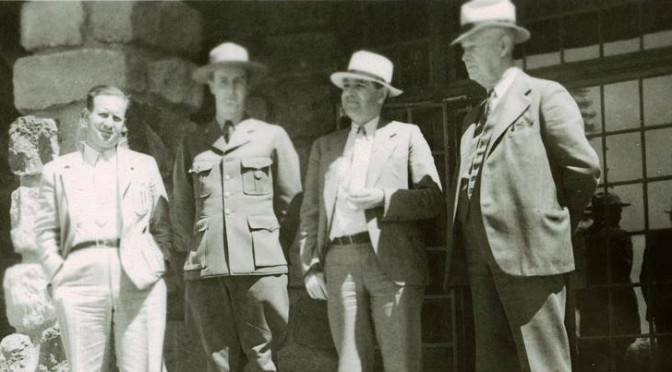I wondered if the Park Service borrowed this idea from the Forest Service?
I really don’t know about that. It’s done in all these big agencies. They don’t want employees to become little kings in their own areas. Part of it is protection of the agency.
What was your grandfather’s philosophy about nature?
My impression of it is that he developed a lot of his ideas from the writing of Wordsworth. He was very much taken with Wordsworth’s poetry. I remember discussing some of that with him. He was also interested in the ideas of people like Muir, Emerson and Thoreau. Grandfather was very philosophical in his interests, with respect to understanding a greater meaning to life and that sort of thing. I have a feeling that he really saw God revealed in nature, particularly in the Redwoods and in the beauties of the Grand Canyon and so on. If you read his writings, this comes out. He also was influenced by Goethe’s writings. I think the title of The Garment of God actually comes from a line by Goethe (2).
Did this have any effect on his ideas about developments in national parks?
Grandfather had very strong beliefs, which put him at odds with the general run of Park Service administrators—particularly those like Conrad Wirth. Unlike many who emphasize development in parks, he believed that the natural scene, if interpreted properly, could provide people with an understanding which would allow them to go away refreshed and be better people. A national park could be a better form of classroom if you take this to its logical conclusion. That’s a hard thing to say. I recollect that studies about interpretation in the national parks generally show that something like ten percent of visitors to places like Yosemite Valley go to the interpretive program. Unfortunately it isn’t very high.
In some cases even less.
Many times the people who got to them are ones who already understand something about the park. There are a few exceptions. I’m thinking of Norris Geyser Basin in Yellowstone, where interpreters have done a good job of reworking what was an awful museum there. It’s now a wonderfully illustrated description of the geyser basins, and then you walk right out of the interpretive center to see the basin itself. They’ve now developed these kiosks into big things. You go into them and see a little slide show on the thermal activity in Yellowstone and the doors of it open just in time to allow you to see an eruption of Old Faithful. That’s the way you get lots of people to see things. The average guy is looking for the thrills, the fast-moving things, like Old Faithful erupting. Then they want to know where’s the john and how to reach the hamburger stands. That’s too bad. Like the woman who went to Grand Canyon and thought that was an awful big ditch. What does it mean? Now that we’ve seen this, what else is there? Actually, grandfather’s vision of what people would get from a park is probably conditioned largely on his own experiences, his writing and his associations with people who, by and large, were people of great importance at that time. I don’t think he really ever had any understanding of the general public.


